Ah, the Tradescantia zebrina plant! This amazing bright color plant has the common name of the inch plant or Wandering Jew. They’re easy houseplants to grow and look after. This is just the right plant to begin your gardening adventures.
The wandering jew is super easy to propagate. Keep reading to find how to propagate it in both in water and soil.
It is one of the hardiest plants, notable for its bright, attractive foliage. You don’t have to worry about killing this plant. If your wandering jews start to get root rot, you can simply take a leaf node and grow a new one.
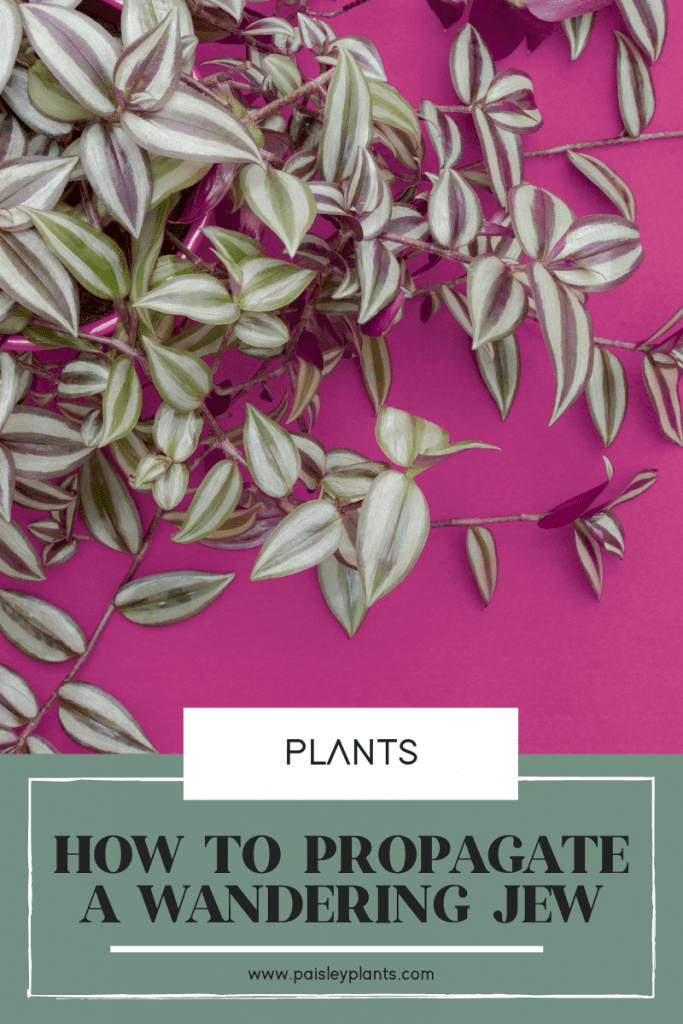
This post includes affiliate links.
Table of Contents
Background
A species of the spiderwort plants, the wandering jew goes by many names. You may know it as “inch plant” or by its Latin name “Tradescantia zebrina.” Its former Latin name was “Zebrina pendula.” It is also nowadays called “wandering dude.”
Native to Mexico, this species has traveled across the world from South America and Africa to Asia and Australia. Usually grown indoors, this these tropical plants grow well outdoors in your garden in warmer climates.
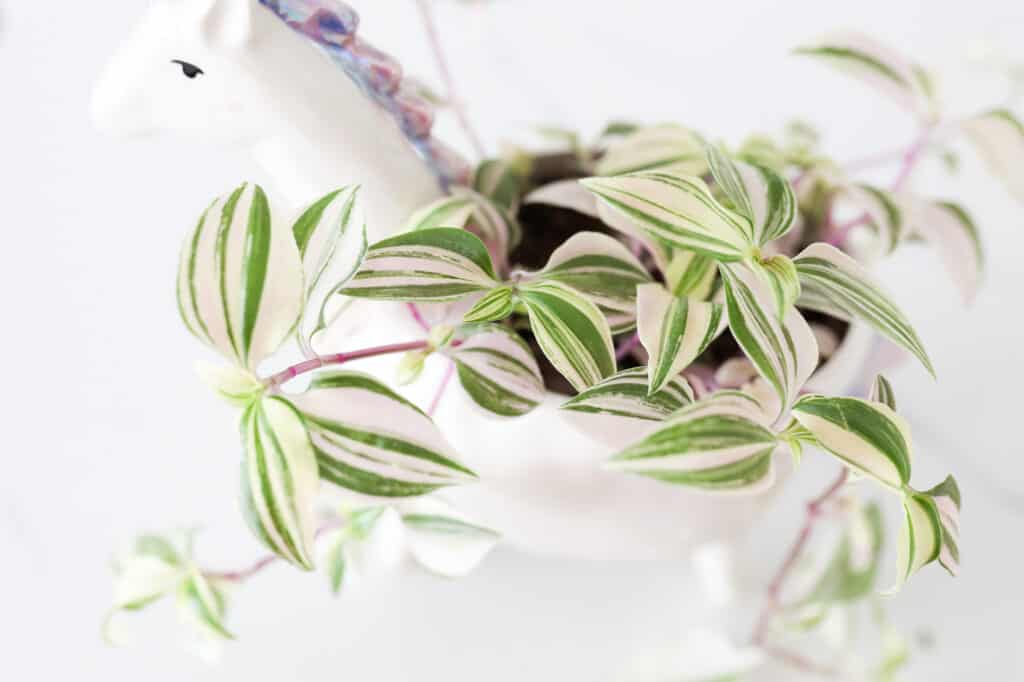
The wandering jew is a herbaceous perennial that can grow 6 to 9 inches high and 12 to 24 inches wide. It has gorgeous, colorful foliage and dangling tendrils.
Wandering Jew leaves are purple and deep green colors and are thin and heart-shaped. They have beautiful silver stripes, which are the reason for the “zebra” in its Latin name.
It has small flowers with three petals, usually white or violet.
Note that while this is the most common variety of the plant, other houseplants in the Tradescantia genus are also called wandering jews. It includes the Tradescantia pallida, also known as purple heart, purple queen, or purple secretia, with deep purple foliage, pointy, elongated leaves, and pale flowers.
The third species, Tradescantia fluminensis, is notable for its long, dark green leaves and white flowers with three petals. You can also refer to them as the wandering gypsy, wandering willie, small-leaf spiderwort, and river spiderwort.
This variety of Tradescantia is considered more invasive than the others, often considered a pest rather than an ornamental houseplant.
Wandering jew may be toxic to animals, causing adverse skin reactions or upset stomach. This plant’s sap can also trigger skin rashes, so keep it away from children and those with sensitive skin.
Find non-toxic pet friendly plants here!
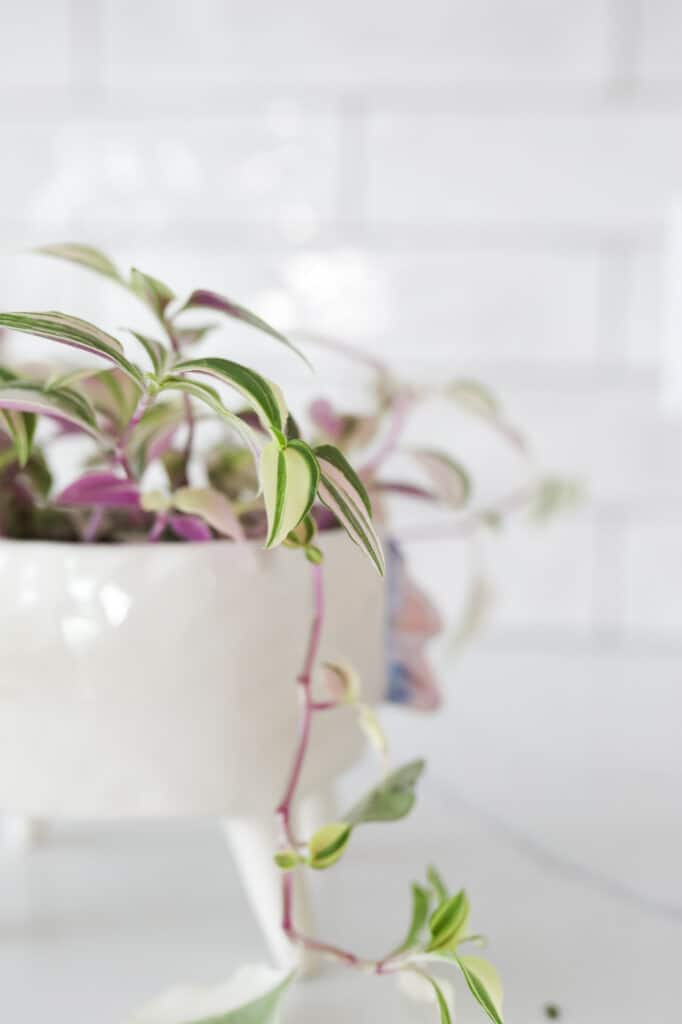
How to Propagate Wandering Jew Plants
Propagating your wandering jew isn’t difficult! Here’s what you need to know.
First up, you’ll need some cuttings from your plant!
How to Take a Cutting
To take a cutting, aka slip, use a pair of clean, sharp scissors rubbed with alcohol and cut the stem below a node, a small protrusion that looks like a bud. It’s where a bud or leaf starts to grow and where roots develop when you propagate it.
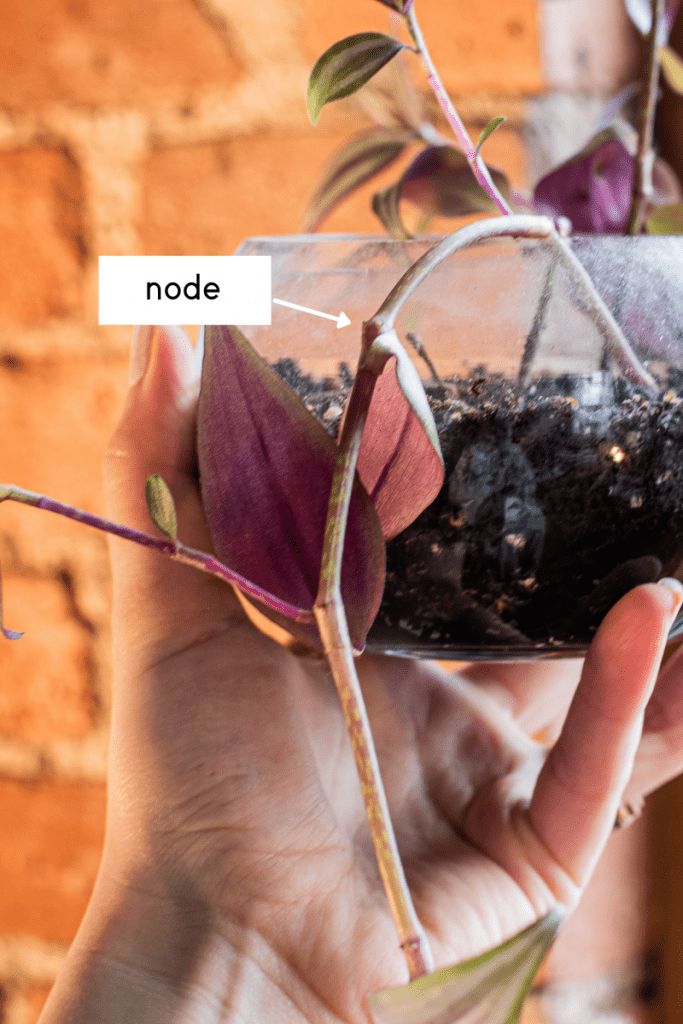
If you can’t find a node, cut the stem right below the newest leaf. A cutting that is 4 to 6 inches long propagates well.
Propagating Wandering Jew in Water
Propagating in water is my personal favorite way to propagate. It’s also an easy way to get new Wandering Jew plants from your original one! To propagate this houseplant in water, follow the steps below:
1. Prep Your Vessel
Fill a propagation station or another container, such as a jar, vase, glass, cup, or test tube with water.
2. Cut a Few Cuttings
Using a pair of scissors, cut off a 4- to 6-inch-long stem at a 45-degree angle just below a node. Remove the old leaves from the base of each stem.
3. Put in Water
Place the cuttings or slips in the container filled with water. Ensure that the node at the bottom stays submerged in water and that the leaves stay above the container’s rim. You’ll see new roots within a week or two.
You’ll want to change the water every week or so to keep pests away.
4. Pot Your New Plant
After around 2 or 3 weeks, the new roots on your cuttings would be a couple of inches long. At this point, place the stem cuttings upright in a pot filled halfway with potting soil mixture. Place the new plant on a sunny windowsill. Water and fertilize it as usual.
Soil Propagation
To propagate a wandering jew in soil, here’s what you need to do:
1. Prep Your Pot
Fill a pot, hanging basket, or another type of container with moistened, all-purpose potting soil mix to about an inch or two below the rim.
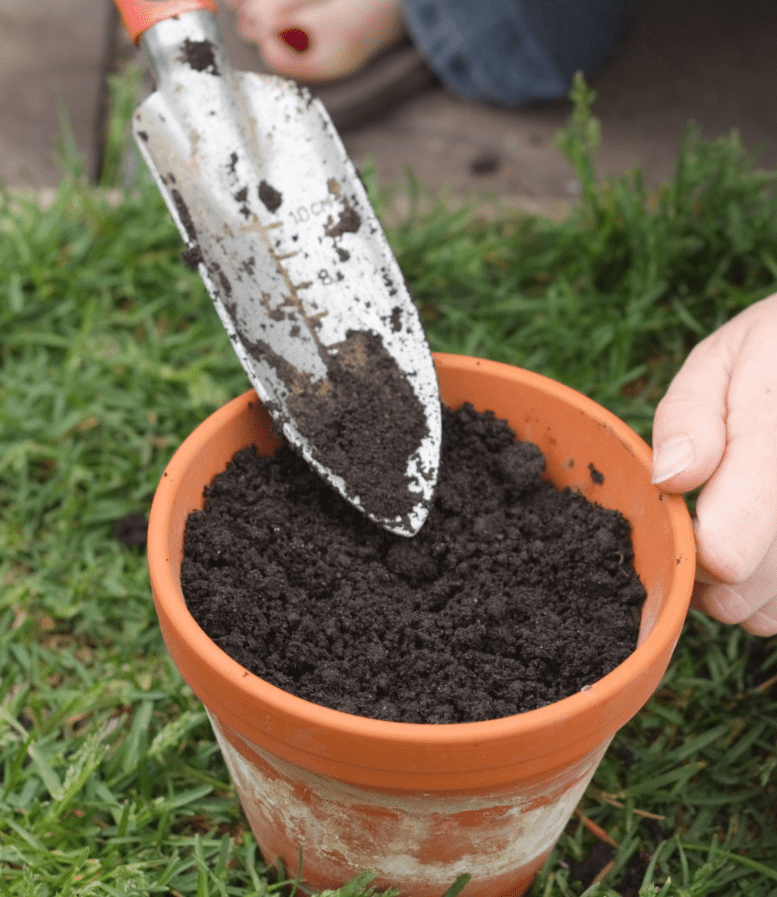
2. Cut Plant Clippings
Take cuttings that are 4 to 6 inches long by cutting at a 45-degree angle just below a leaf node, using a sharp, clean, sterilized blade or pair of scissors.
Remove the old leaves from the bottom of the stems. You can dip the stems in rooting hormone before planting if you wish to speed up the process.
3. Put Clippings in Soil
Make 2-inch-deep holes in the soil. Place a cutting in each hole. Now gently pat the soil around the cuttings.
4. Seal Container
Seal the container with a plastic bag or sheet and secure the plastic with a string or rubber band. You don’t need to water them as the plastic will keep the soil moist for a few weeks.
5. Remove Covering
To know if your cuttings have begun to root, give them a little tug. If you’re met with resistance they’ve grown roots. If not, they need a bit more time.
Once they’ve established roots you can remove the covering!
Wandering Jew Care After Rooting
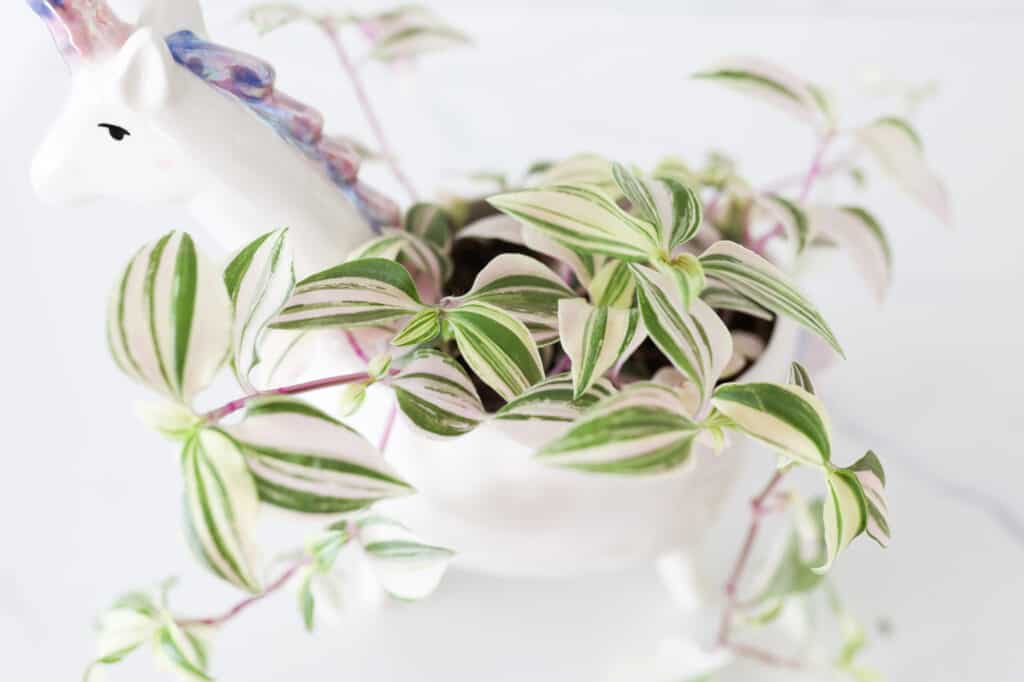
After rooting and planting, you’ll need to look after your plant! Follow the guidelines below related to soil, temperature, watering, and light to care for the plant.
How to Care for and Grow Wandering Jew Plants
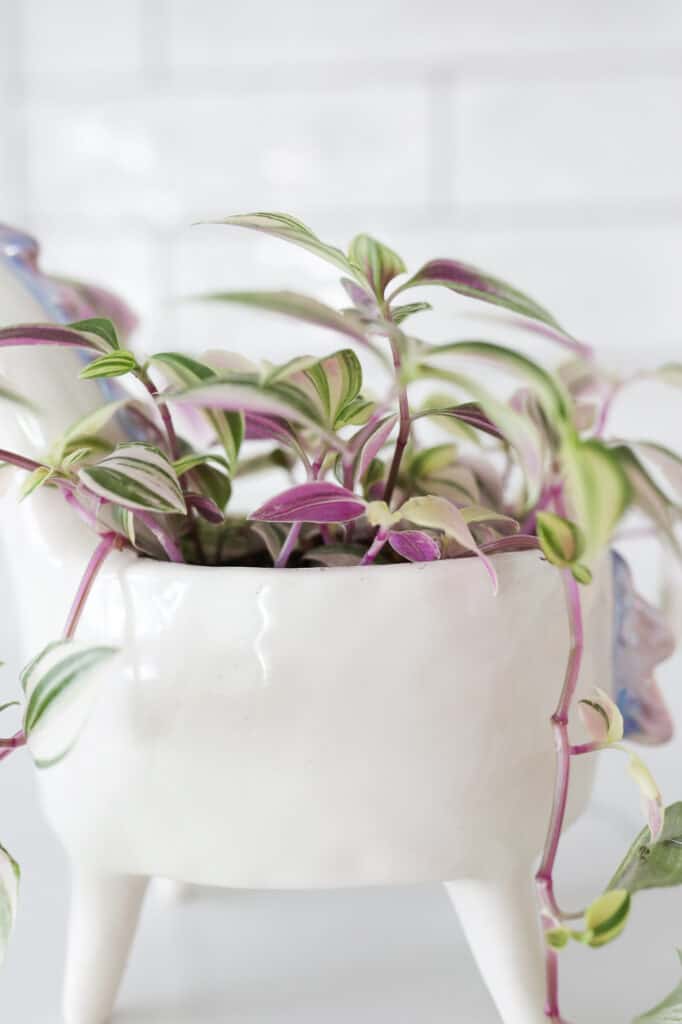
Now that you know exactly what the wandering jew is. Here are some care tips:
Light
It’s best to grow wandering jew in bright indirect light. For its optimal growth, place them on an east-facing windowsill.
They can also live in low-light conditions but expect them to lose their silver streaks over time. Aside from reverting its leaves to green, not enough light can also prevent it from blooming.
Conversely, too much direct bright light and heat may stunt its growth. Make sure it’s getting an adequate amount of light. Turn your pot about a few times a month to ensure that it grows evenly.
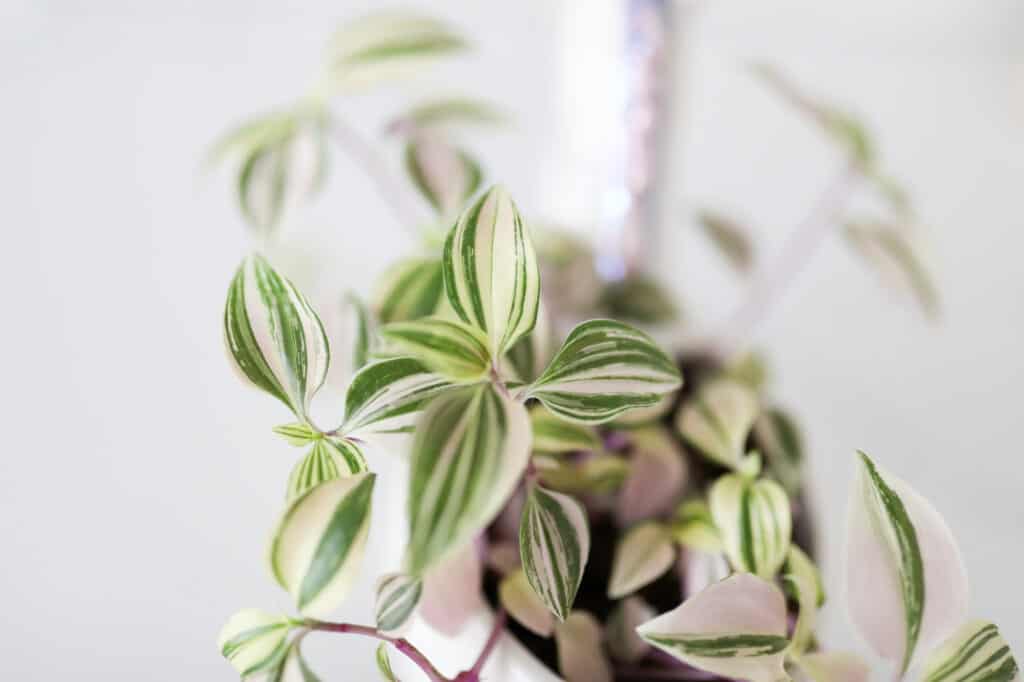
Watering
The wandering jew thrives with a good watering, but not consistently moist soil. It’s best to let the soil partially dry out before the next watering.
A good rule of thumb is to water it when the top two inches of the soil feels dry, or when the plant’s leaves look leggy, brown, or crispy, or are curling up or dropping. However, some leaf drop near the plant’s base is normal.
Avoid overwatering, too, or else the leaves will turn yellow, and the stems will start to turn soft and rot. Don’t water directly into the center of the plant. Allow the pot to drain completely after watering.
During winter months, growth becomes slow, so reduce your watering sessions in these months.
Temperature
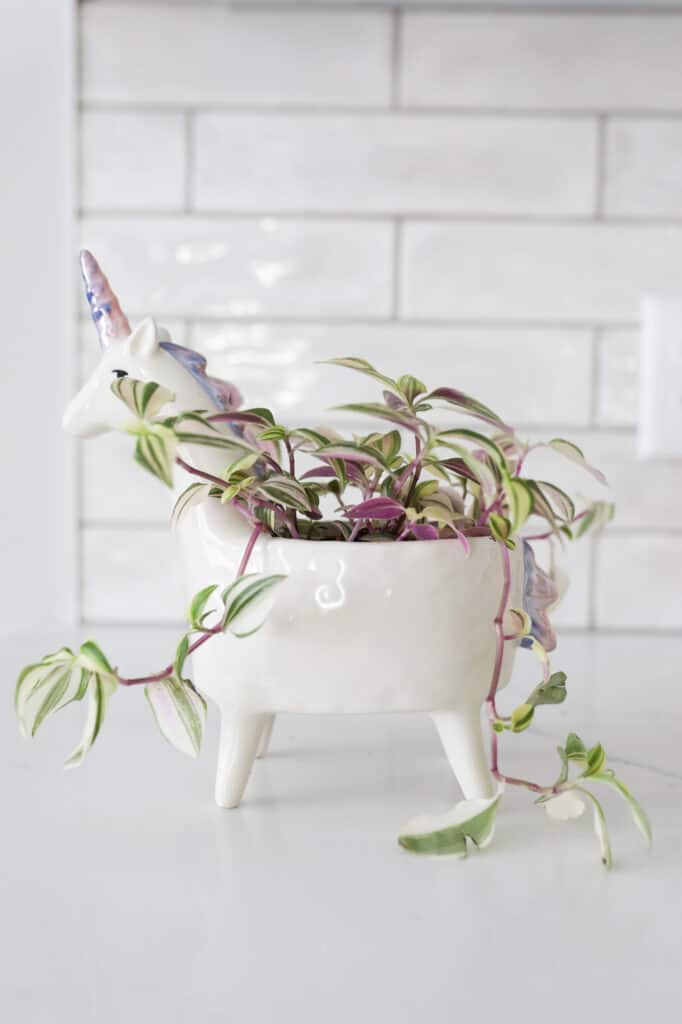
As mentioned earlier, this plant can be indoors or outdoors as long as it’s kept in a warm, humid environment. It thrives in temperatures between 55 and 75 degrees Fahrenheit. It would do best in a room with a high humidity level such as a bathroom.
Type of Soil
For this easy-to-care-for plant, a good, all-purpose potting soil with any pH will do, as long as it drains well. This is because this houseplant needs to stay moist but not soggy. Too much moisture can lead to root rot.
You can also add a little sand and perlite to your soil mixture to enhance drainage.
Fertilizer
To fertilize the plant, take about 1/2 teaspoon of water-soluble fertilizer and add it to a gallon of water. Mix it well and feed this food to the plant.
Fertilizing it every month promotes healthy growth.
Once it matures, fertilize every other week during the spring and summer months and once every month during autumn and winter.
Common Pests
Spider mites and mealybugs are a few pests commonly seen on wandering jews. If you see any on your plant, rinse them off with water and spray it with insecticidal soap or rubbing alcohol more often to keep them at bay.
Pruning
After about a year, this houseplant may begin to look leggy and drop leaves near the base of the stems. At this stage, take cuttings from healthy branches and plant them near the aging plant in the same container. Do the same if you see root rot.
Remove discolored, dried, brown, and crispy leaves regularly.
FAQs
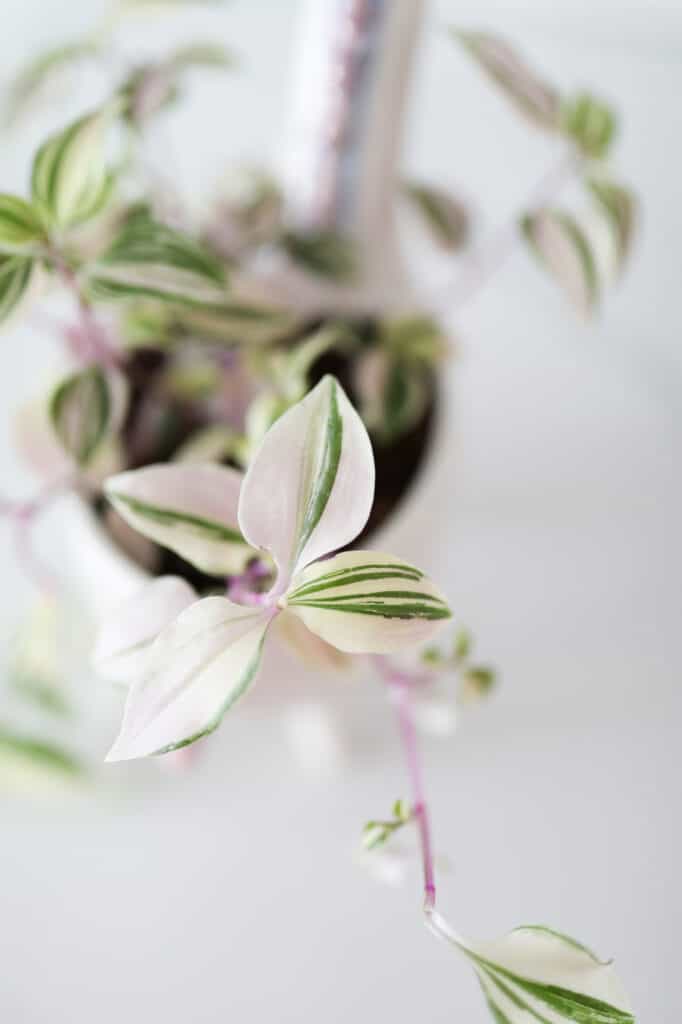
Wandering jews are incredibly hardy and adapt well to different humidity levels and conditions, making them easy to propagate. Just a little care is all they need.
It’s not recommended to propagate a wandering jew from just a leaf. You’ll want to ensure that you cut a stem with a node on it where the roots while grow from.
Despite your best efforts, your wandering jew will naturally grow spindly and leggy after a few years, as this houseplant has a short lifespan of 2 to 3 years. In this case, take a few cuttings from healthy branches and plant them in the same container or another one.
However, if your Wandering Jew plant is not even a year old, the leggy growth may be due to insufficient water or light. Place it in an area with more sunlight, water it a bit more often, and see the difference after a week or so.
I hope this helps you in knowing exactly how to propagate wandering jew with success!
If you’re looking for additional plants to grow, check out one of these:

